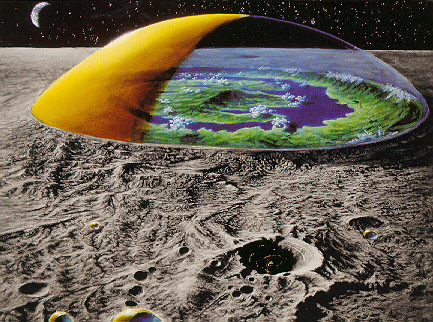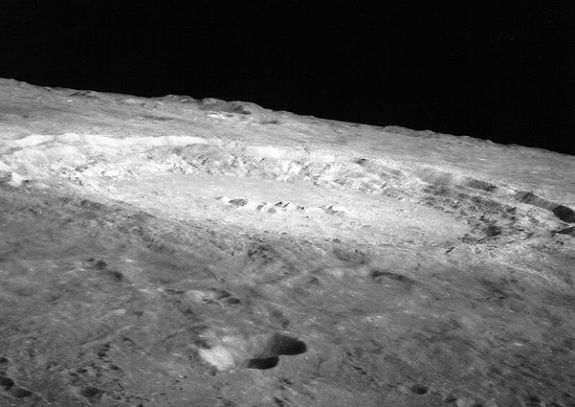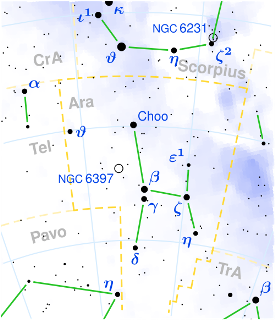An Artist’s Vision of a Future Colony on the Moon
Some time ago, I stumbled upon an amazing painting by Marshal T. Savage depicting his vision of a future colony on the Moon. It’s the same Copernicus Crater, except it’s domed over and terraformed to create an ecosphere.

At first I thought that this was really cool, but it would be impossible to build such a gigantic structure. (The crater has a diameter of 93 kilometers!) However after giving it some thought I changed my mind. If it was built with a material strong enough like carbon nanotubes, it could in theory be built. While such as structure would be impossible on Earth, the Moon has a gravity six times lower, which means the structure would be six times lighter on the Moon. Also, the Moon has virtually no atmosphere. This means that the air inside the dome will create a difference of pressure between the inside and outside of the dome, which would help support the structure.
Though I doubt that this will be built in my lifetime, I would definitely want to live there if it happens! 🙂
The Copernicus Crater
Copernicus is one of the largest lunar impact craters on the visible hemisphere of the Moon. It was named after the Polish astronomer Nicolaus Copernicus. The crater is estimated to have formed about 800 million years ago during the Copernican period of lunar history, which was named after the crater.
Copernicus is visible using binoculars, and is located slightly northwest of the center of the nearside, in eastern Oceanus Procellarum. The crater has a diameter of 93 kilometers and a maximum depth of 3.8 kilometers. Copernicus also has a dozen satellite craters ranging between 3 and 7 kilometers in diameter. By convention they share the name of the main crater with an added letter from “A” to “R” (for example “Copernicus A” and “Copernicus P”).
The Apollo 12 mission landed north of Copernicus on mare basalts of Oceanus Procellarum and the crater itself was a possible landing site for the Apollo 20 mission, which sadly was canceled. Copernicus crater is also a popular site for a lunar colony in numerous science-fiction works.

This photo was taken by the Apollo 12 mission in 1969.
Would you like to receive similar articles by email?






5 Comments
Tim Jones
Even with current technology, very thick airtight panels of flat glass could be built across crater rims temporarily supported by scaffolds or inflated tents until the whole crater could be flooded with low pressure oxygen to support the weight.
More layers of glass may then be stacked, possibly with ‘water sandwich’ compartmentalised layers to improve shielding from radiation and micrometeorites and a refuge for fish and photosynthesising seaweeds.
Oxygen becomes breathable over 3 psi which means that 18lb/in² (Earth weight) of glass/water would be the distributed load in the crater lid. The lunar south pole may be found to have enough silicate, permafrost and suitable craters to make this feasible in the future.
Paul Tomaszewski
Thank you for your insights!
The lunar south pole would also be the perfect location due to it receiving more sunlight. And of course using lunar resources as opposed to bringing them all the way from Earth, will definitely bring down the costs considerably.
Paul Tomaszewski
Unfortunately I do not have the contact info for the artist, however you should be able to reach him through the Living Universe Foundation on http://luf.org/
Phil Donald
I am producing a CD at the moment and would love to use this picture in the artwork. Could I please have contact details for the artist? Alas, no money is involved but there will be free publicity for Mr Savage and his work.
Many thanks
Phil Donald
Bonita Ornellas
This is a great science fiction resource. Thanks for the interesting info. I’ll be back to check it out again soon